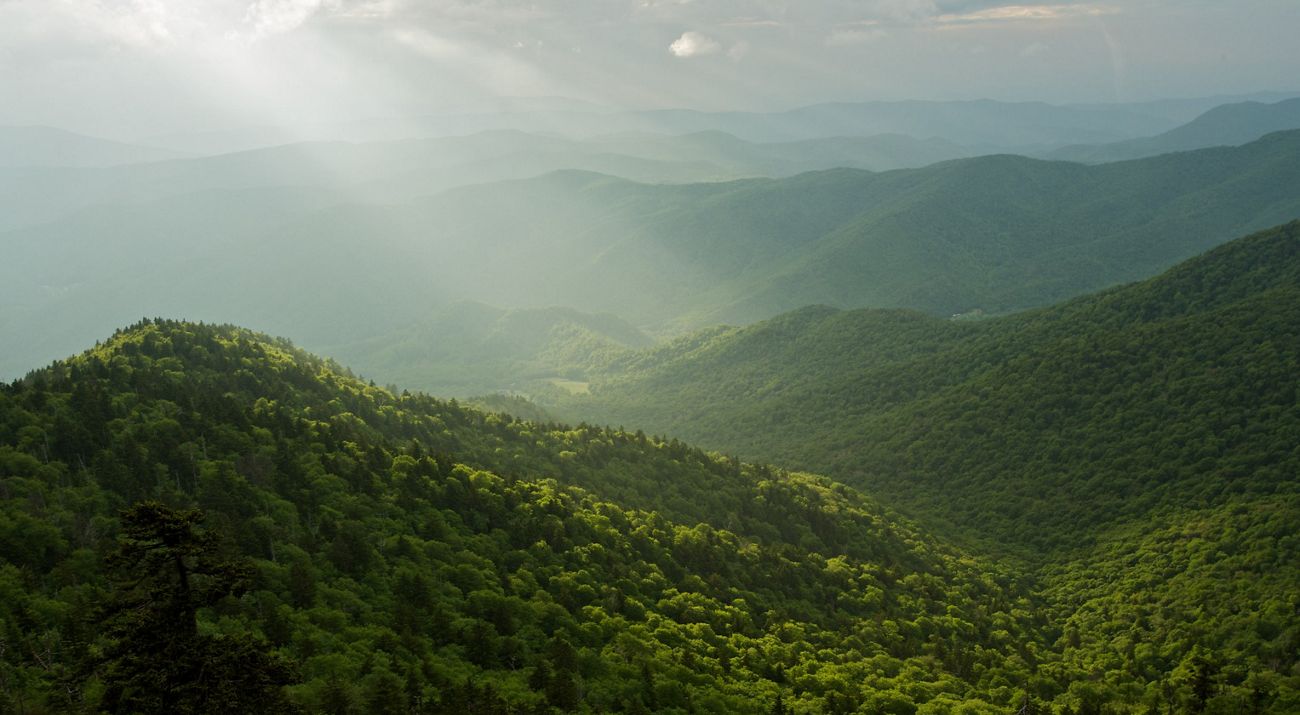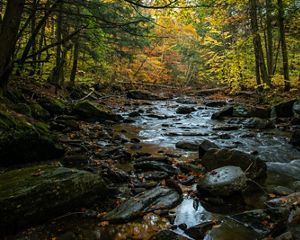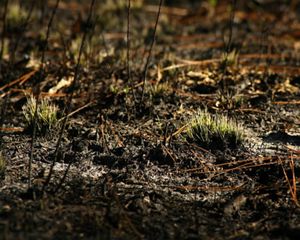Tennessee Forests and Woodlands
Conserving forests and woodlands supports wildlife, benefits water quality and combats the effects of climate change in Tennessee.
Tennessee boasts forests covering an estimated 13,881,540 acres—53 percent of the state. These were once interspersed with a rich mosaic of prairies, glades, grasslands and woodlands that have steadily declined over the past century. Together, these native habitats provide numerous benefits to all Tennesseans that include filtering air and water, sequestering and storing carbon, harboring wildlife, and serving as a source of timber and other products that support local economies and livelihoods. Tennessee’s forests and woodlands also serve as a cherished destination for those seeking solace and beauty, or active outdoor recreation in a natural setting.
Tennessee’s forests and woodlands face significant threats in the form of wildfire, invasive pests and disease, sprawling development and a changing climate. The Nature Conservancy is working with partners around the state to combat these threats in three primary ways:
- Managing forests for optimum health and productivity.
- Restoring native forests and woodlands to promote biodiversity and resilience.
- Acquiring land and conservation easements to safeguard fragile habitat requiring permanent protection.
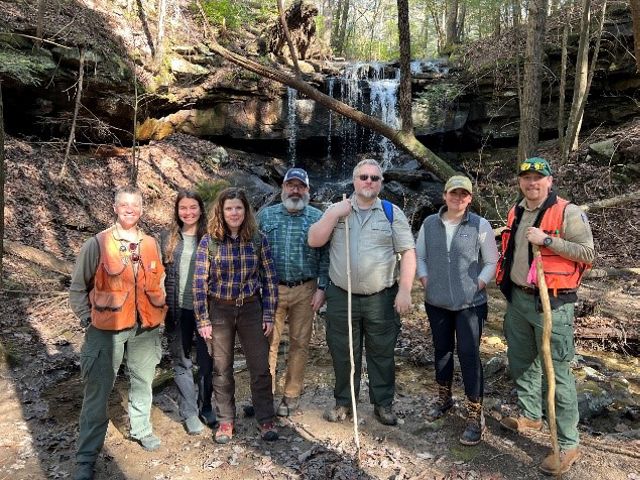
Learn More
For more information contact TNC’s Forest Action Plan Coordinator, Allana Funderburk, at a.funderburk@tnc.org.
Partners from around the state convene to update a ten-year Forest Action Plan for Tennessee.
The Tennessee Department of Agriculture (TDA) Division of Forestry (TDF) partnered with TNC to co-author the 2020-2030 Tennessee Forest Action Plan (FAP), which guides forest management and conservation priorities around the state. The collaborative FAP provides specific recommendations and action items to achieve Tennessee’s forest conservation goals. Key goals include addressing national private forest conservation priorities and serving as a tool for organizations and individuals in Tennessee seeking to address relevant forest resource issues.
The FAP outlines four overarching objectives:
- Enhancing Forest Health and Resiliency
- Expanding Market Diversification
- Improving Connected Landscapes
- Enhancing Wildfire Resiliency.
Throughout the FAP, success stories highlight coordinated conservation efforts. These examples underscore how our forests remain both ecologically valuable and economically productive. Additionally, the FAP identifies priority areas where conservation efforts can have the greatest environmental impact, regional initiatives that play a role in the health of Tennessee’s forests, and planning initiatives that can help engage stakeholders in achieving FAP objectives.
The majority of Tennessee’s forests are owned by private landowners whose active participation—in forest management and sustainable stewardship—will ensure that Tennessee’s forest resources are secured for the greatest good and for the longest time. Through strategic mindful actions guided by this FAP, Tennesseans will continue to protect, conserve and enhance Tennessee’s forests.
The majority of Tennessee's forests are owned by private landowners and many serve as working forests.
Since many of Tennessee’s forests are in private ownership, TNC assists landowners interested in improving the health and value of their forests through its Working Woodlands program. As part of the process, landowners enter into a voluntary agreement to leave the land undeveloped, forever, in return for guidance on sustainably harvesting timber in ways that promote forest health and generate revenue. This includes identifying socially responsible and ecologically-sound management practices that qualify a property for Forest Stewardship Council® (FSC) certification C008922. Landowners enrolled in Working Woodlands also have an opportunity to participate in an emerging market that allows for the sale of carbon credits to businesses and individuals seeking to voluntarily offset emissions.
TNC is also working with University of the South ("Sewanee") at a 13,000-acre forested landscape known as the Domain, also located within the Cumberland Plateau. In addition to securing FSC® certification, the partners are drawing upon ecological and cultural data to inform additional actions that include prescribed burning and restoring shortleaf pine habitat to benefit native wildlife.
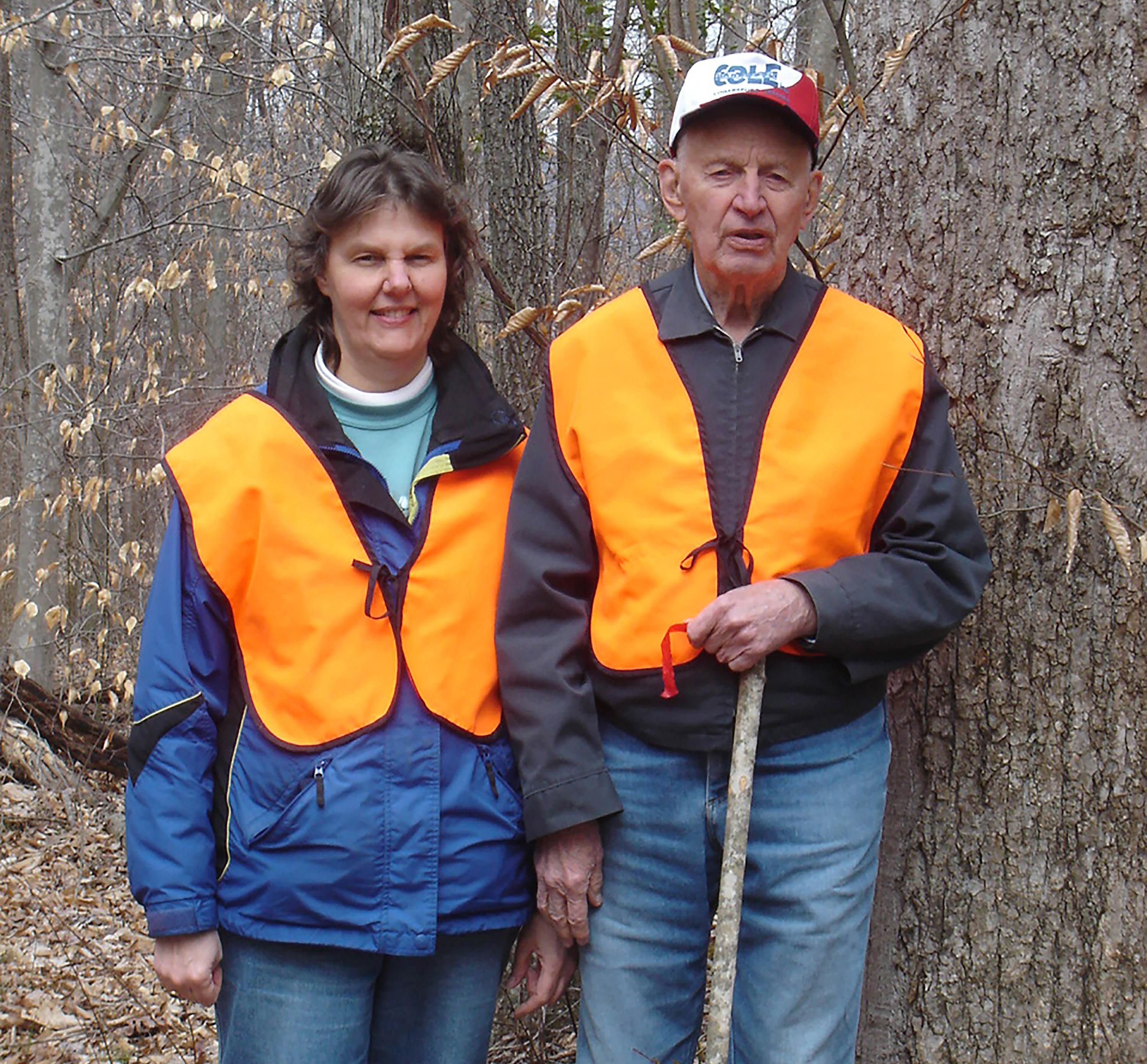
Faces of Conservation
One Family's Experience
During his lifetime, the late John Shafer—who lived to be 106 years old—took care to harvest trees sustainably on the 3,120 acres of beautiful forestlands used for his family’s lumber business since the 1940s. In 2016, just before he died, Mr. Shafer joined his daughter and her husband in enrolling the property in TNC’s Working Woodlands program, in his words, to “keep the property undeveloped and intact while still producing income.” Doing so involved securing a working forest conservation easement—a binding legal agreement that is permanently tied to the property—that prevented development, agriculture or unsustainable forestry practices. The easement did allow for the sustainable harvest of timber. Shafer’s daughter, Rebecca Tuuk adds, “This agreement protects our land forever, which is why I highly recommend Working Woodlands to private forest owners seeking to protect nature and their own livelihoods.”
Establishing and maintaining forests in Tennessee's cities goes a long way in supporting wildlife and building resilience in the face of climate change.
Doing our part in slowing the pace of climate change and protecting biodiversity requires taking a look at urban forests since more than 66 percent of Tennesseans reside in cities. That is why TNC is working at The Warner Parks, a 3,000-acre sanctuary located in the heart of Nashville.
In addition to serving as a popular destination for city residents, The Warner Parks welcome 191 bird species and other wildlife, including Tricolored bats and Timber rattlesnakes. Thanks to support from Friends of Warner Parks (FOWP) and Metro Nashville Parks and Recreation, TNC is helping to identify ways of safeguarding wildlife and improving the Parks’ potential for storing carbon. This effort began with inventorying forest health and diversity to establish a baseline for conservation, including a focus on combating invasive species and identifying ways to improve habitat for birds.
After identifying forested areas on a map, the team used a special sampling design to create 500 individual plots for data collection. At each plot, professionals from F&W Forestry collected data—for each tree—that included:
- Photographs
- Condition
- Species
- Size
- Defects
- Invasive Species
- Special Features
After analyzing the data, the foresters made recommendations to FOWP and Metro Nashville so that the partners can advance the project to meet TNC’s climate and wildlife goals around Nashville.
Native woodlands are in decline and represent a key component of a healthy natural landscape in Tennessee.
Tennessee didn’t always boast 14 million acres of forest. Instead, a mosaic of rich and complex prairies, glades, woodlands and other grasslands may have once dominated up to 64 percent of the landscape now considered forest. On these lands, frequent, natural fire disturbances pruned back all but the most fire-tolerant tree species while prairie grasses and wildflowers thrived in the sun. These woodlands all but disappeared after more people settled into the landscape.
Without fire, forests grow unchecked to develop closed tree canopies that block sunlight, which has altered native plant and animal communities. In fact, many of Tennessee's rare and declining plant, insect, reptile and bird species are associated with fire-adapted habitats.
TNC is committed to restoring these nearly lost landscapes and with them, their characteristic plants, animals and incomparable beauty. Together with partners, we are employing geospatial and other technology to identify where native woodlands and forests once naturally occurred and prioritize locations for restoration. Then, we intend to increase the pace and scale of restoration, which includes delivering fire to the highest conservation priorities, especially in portions of the Cumberland Plateau and targeted TNC preserves. We are also working to eradicate the non-native and highly invasive hemlock woolly adelgid (HWA), which without any natural predators, is killing hemlocks in Tennessee and throughout the eastern United States.
Places We Protect
No matter where you travel throughout Tennessee’s Cumberland Plateau, you can witness TNC’s 40+ years of protecting native forest and woodland habitats. “Conserving the stage” by identifying and protecting our most critical wildlife corridors is a foundational strategy in TNC’s conservation toolkit.
- At the Walls of Jericho and Bear Hollow Mountain Wildlife Management Area in southeast Tennessee, TNC and partners acquire land from willing private landowners to expand an 80,000-acre public land base that includes forests key to safeguarding Alabama’s Paint Rock River watershed headwaters. The watershed is home to 100 species of fish and about 45 mussel species, including two mussel species—pale lilliput and Alabama lampshell—found nowhere else in the world and one fish species, palezone shiner, that is confined to the Paint Rock River and one stream in Kentucky. The area also provides important habitat for migratory songbirds, such as the cerulean warbler, and for non-migratory birds like ruffed grouse.
- The 5,763-acre Bridgestone Nature Reserve at Chestnut Mountain serves as a living laboratory for exploring innovative forest management strategies that include quantifying the carbon-capturing power of forests, restoring shortleaf pine woodlands (once the most prevalent pine tree in the eastern United States), and much more. Acquired by TNC through a land donation in 2019, Chestnut Mountain connects to over 50,000 contiguous acres of state-owned conservation lands.
- Along the Tennessee-Kentucky border in northeast Tennessee, TNC has launched a 100,000-acre forest and woodland restoration and protection endeavor that is a portion of the larger, 253,000-acre Cumberland Forest Project, where goals include conducting environmentally beneficial forest management activities pursuant to FSC® standards to increase atmospheric carbon storage on the property. The sale of carbon offsets from the property generates revenue for TNC’s restoration management activities while providing for public recreational use of the land base.
